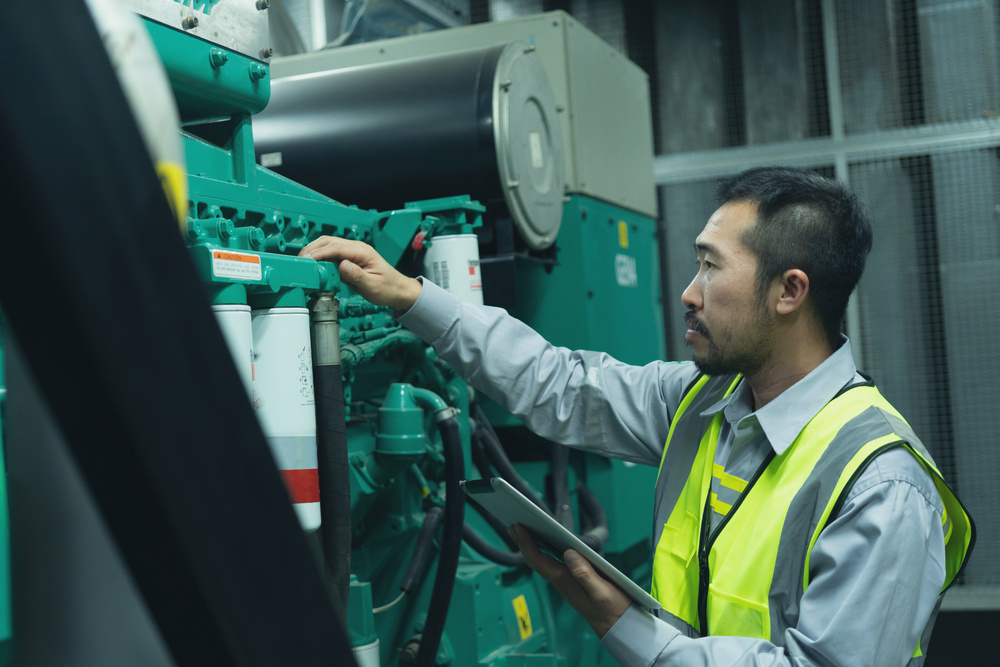
In industries that rely on high-value assets—manufacturing equipment, utility infrastructure, or vehicle fleets—maintaining these assets' longevity and operational efficiency is crucial. The traditional reactive maintenance approach, where repairs are made only after an issue occurs, can be costly and disruptive. In contrast, preventative maintenance offers a proactive solution to ensure assets are kept in optimal condition, reducing downtime and minimizing long-term costs.
What Is Preventative Maintenance?
Preventative maintenance involves regular inspections, upkeep, and repairs of equipment or assets to prevent breakdowns before they happen. It’s about anticipating potential problems rather than waiting for assets to fail. This approach allows businesses to address issues before they escalate, ensuring that assets function smoothly for extended periods.
The Benefits of a Preventative Maintenance Strategy
- Extended Asset Lifespan: Routine maintenance can significantly extend the life of an asset. By addressing wear and tear early, businesses can delay the need for major repairs or replacements.
- Increased Efficiency: Well-maintained equipment operates more efficiently, using less energy and resources. This can translate into cost savings in terms of energy usage and avoiding emergency repairs.
- Reduced Downtime: One of the most significant advantages of preventative maintenance is the reduction in unplanned downtime. When machines or systems are maintained regularly, they’re less likely to experience sudden failures, allowing businesses to continue operations without disruption.
- Cost Savings: Although implementing a preventative maintenance program may have upfront costs, it can save money in the long term. Emergency repairs are often more expensive than routine maintenance, and avoiding unexpected downtime can prevent costly delays.
- Improved Customer Satisfaction: By ensuring assets are functioning optimally, preventative maintenance reduces the chances of disruptions that could negatively impact customers. Reliable service and minimized downtime lead to higher customer satisfaction and trust.
- Improved Safety: Equipment failures can sometimes result in unsafe working conditions. Preventative maintenance helps ensure that all equipment functions correctly, reducing the risk of accidents and improving workplace safety.
How Preventative Maintenance Enhances Asset Lifespan
One of the most significant advantages of a preventative maintenance strategy is its ability to extend the lifespan of assets. By regularly inspecting and maintaining equipment, businesses can prevent minor issues from becoming major failures, reducing the need for costly repairs or replacements. Here’s how preventative maintenance supports long-term asset health:
- Routine Inspections: Regular inspections allow businesses to detect early signs of wear and tear before they escalate into serious problems. By identifying potential issues in advance, organizations can make minor repairs that prevent significant damage, ensuring that assets remain functional and efficient for extended periods.
- Scheduled Maintenance: Performing maintenance tasks at recommended intervals—such as replacing parts, lubricating components, or updating software—ensures that assets receive the care they need to operate optimally. Following a consistent maintenance schedule based on asset usage helps avoid sudden breakdowns, which can significantly reduce an asset's life.
- Reduced Downtime: Minimizing unplanned downtime improves efficiency and protects assets from the stresses associated with emergency repairs and frequent starts and stops. The less time an asset spends offline, the less strain is placed on its components, contributing to a longer operational lifespan.
- Predictive Analytics: Leveraging historical data and real-time monitoring, predictive analytics can forecast when a piece of equipment is likely to fail. This allows businesses to schedule maintenance just in time, avoiding both premature and overdue repairs. By proactively managing potential risks, organizations can ensure assets remain in top condition, maximizing their operational life.
- Proactive Asset Management: Using technology such as IoT sensors and AI-driven tools, businesses can monitor critical asset metrics—like temperature, vibration, or pressure—in real-time. This constant flow of data enables quick adjustments and timely maintenance, preventing excessive wear and extending the overall lifespan of the asset.
By adopting these preventative maintenance practices, organizations can ensure their assets are well-maintained, reducing the need for costly replacements and maximizing the return on investment over the long term.
Overcoming Challenges in Implementing Preventative Maintenance
While the benefits of preventative maintenance are clear, there can be challenges in implementing it effectively. One of the biggest obstacles is the initial investment in tools, personnel, and technology required to track and maintain assets. However, utilizing Field Service Automation can significantly reduce the complexity by centralizing maintenance tasks, automating scheduling, and enabling real-time asset tracking. The long-term savings from reducing downtime and extending asset lifespan typically justify the costs.
Another challenge is the need for skilled personnel to perform the necessary inspections and maintenance. With Mobile Workforce Management, businesses can streamline technician workflows, providing field teams with the tools and data they need to conduct inspections and make informed decisions quickly. Training staff and ensuring they understand the importance of preventative maintenance becomes more manageable when the right tools are implemented. It also allows you to utilize contractor staff and assign the right people to the right tasks quickly and efficiently, especially at a time when skilled workers may not be readily available.
Lastly, integrating preventative maintenance with other business processes can be complex. It requires collaboration across teams and departments, particularly between operations and maintenance personnel. Asset management software can help bridge this gap by providing real-time visibility into asset health and maintenance tasks, ensuring seamless communication and coordination, and preventing disruptions to ongoing operations.
Conclusion
Preventative maintenance is a powerful strategy that can help businesses maximize the lifespan and efficiency of their assets. By regularly maintaining equipment, organizations can reduce downtime, increase efficiency, and save money in the long run. As industries evolve and technology advances, adopting proactive maintenance practices will be essential for staying competitive in today’s fast-paced environment.
.jpg?width=352&name=shutterstock_2568921545%20(1).jpg)

